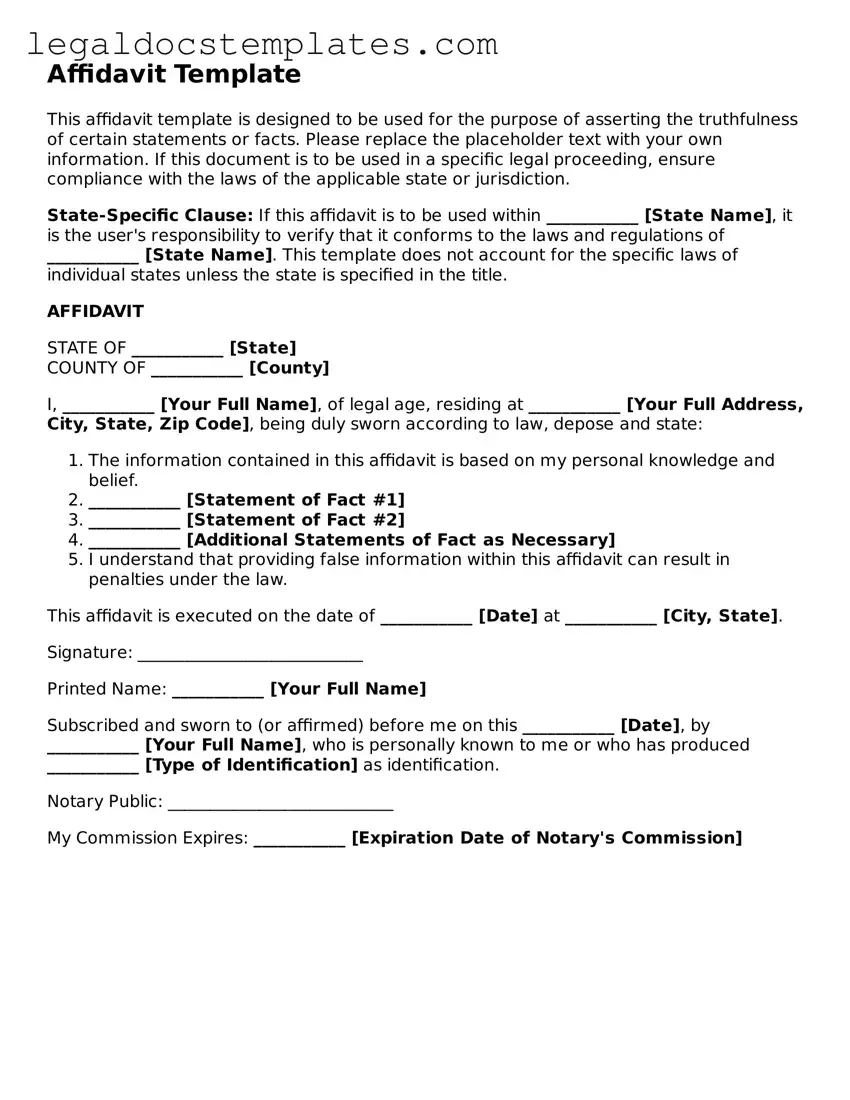Affidavit Template
This affidavit template is designed to be used for the purpose of asserting the truthfulness of certain statements or facts. Please replace the placeholder text with your own information. If this document is to be used in a specific legal proceeding, ensure compliance with the laws of the applicable state or jurisdiction.
State-Specific Clause: If this affidavit is to be used within ___________ [State Name], it is the user's responsibility to verify that it conforms to the laws and regulations of ___________ [State Name]. This template does not account for the specific laws of individual states unless the state is specified in the title.
AFFIDAVIT
STATE OF ___________ [State]
COUNTY OF ___________ [County]
I, ___________ [Your Full Name], of legal age, residing at ___________ [Your Full Address, City, State, Zip Code], being duly sworn according to law, depose and state:
- The information contained in this affidavit is based on my personal knowledge and belief.
- ___________ [Statement of Fact #1]
- ___________ [Statement of Fact #2]
- ___________ [Additional Statements of Fact as Necessary]
- I understand that providing false information within this affidavit can result in penalties under the law.
This affidavit is executed on the date of ___________ [Date] at ___________ [City, State].
Signature: ___________________________
Printed Name: ___________ [Your Full Name]
Subscribed and sworn to (or affirmed) before me on this ___________ [Date], by ___________ [Your Full Name], who is personally known to me or who has produced ___________ [Type of Identification] as identification.
Notary Public: ___________________________
My Commission Expires: ___________ [Expiration Date of Notary's Commission]
